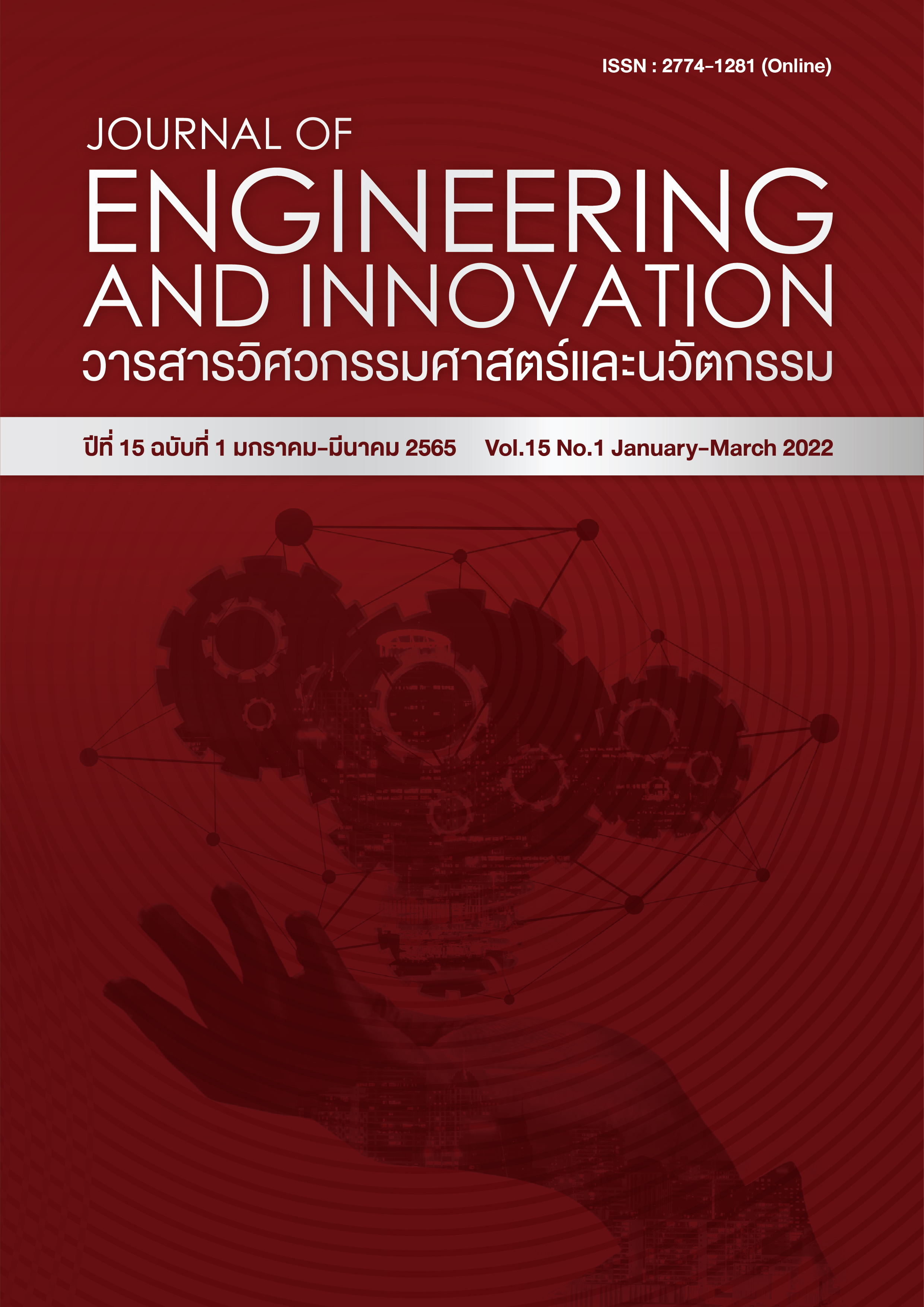An Application of kansei engineering technique for the design and development of leather product: A case study of leather manufacturer, muang district, songkhla province
Main Article Content
Abstract
The objective of this research is to studied about the design of leather women backpack products. By applying the Kansei engineering to explore the emotions, feelings and needs of consumers towards the products used in the design and development of new leather women backpack products that are preferred by consumers. The questionnaires used in the data survey were Likert scale. The data from the survey were analyzed by quantitative analysis. The results of the quantitative analysis are in the form of predictive equations, which show the relationship between Kansei words and product characteristics. The result of this reserach is the design of leather backpack for women allows designers to customize features and design products that meet the needs of consumers in the feeling of the three formats is "Minimal" with a good level of satisfaction with an average of 4.07, "Luxury" with a good level of satisfaction with an average of 4.10 and " Avant Garde " with a good level of satisfaction with an average of 4.21.
Article Details
References
รุ้งเพชร ยืนเพ็ง. การพัฒนาหลักสูตรฝึกอบรมเรื่อง การออกแบบกระเป๋าสตรีในงาน อุตสาหกรรม สำหรับนักเรียนระดับประกาศนียบัตรวิชาชีพ (ปวช.). สาขางานอุตสาหกรรมเครื่องหนัง : วิทยาลัยศิลปหัตถกรรมกรุงเทพ สำนักงานคณะกรรมการการอาชีวศึกษา; 2552.
บวรชัย ศศิธร. 2562 มกราคม 3. สัมภาษณ์.
กุศล พิมาพันธุ์ศรี. การพัฒนาผลิตภัณฑ์ใหม่ด้วยวิศวกรรมคันเซ. ใน: การประชุมวิชาการด้านการพัฒนาการดำเนินงานทางอุตสาหกรรมแห่งชาติ ครั้งที่ 2. กรุงเทพฯ: 2554. 331-337.
อภิชฏา ทองรักษ์ และสุชาดา สิทธิ์จงสถาพร. วิศวกรรมคันเซ: ระเบียบวิธีพัฒนาผลิตภัณฑ์. วารสารวิชาการและวิจัย มทร.พระนคร. 2557;8(1): 197-204.
ศิริชัย ยศวังใจ. การออกแบบและพัฒนาเก้าอี้รับประทานอาหารด้วยหลักการวิศวกรรมคันเซ. วารสารการวิจัยทางวิศวกรรมและวิทยาศาสตร์ประยุกต์. 2557;41(2): 191-200.
Kongprasert N. Emotional Design Approach to Design Teak Wood Furniture. In: Proceedings of the Asia Pacific Industrial Engineering & Management Systems Conference. Nakhon Nayok: 2021. 805-812.
กนกพร ประยูรยวง, กุศล พิมาพันธุ์ศรี และ ศิริชัย ยศวังใจ. การประยุกต์วิศวกรรมคันเซเพื่อการพัฒนาผลิตภัณฑ์ใหม่: การออกแบบผลิตภัณฑ์ตู้เสื้อผ้าเชิงแนวคิด. ใน: การประชุมวิชาการด้านการพัฒนาการดำเนินงานทางอุตสาหกรรมแห่งชาติ ครั้งที่ 4. กรุงเทพฯ: 2556. 169-176.
Mamaghani KN, Rahimian E, Mortezaei RS. Kansei Engineering Approach for Consumer's Perception of the Ketchup Sauce Bottle. In: International Conference on Kansei Engineering and Emotion Research. Linkoping; 2014: 1487-1494.
Tamaa PI, Azliaa W, Hardiningtyasa D. Development of Customer Oriented Product Design using Kansei Engineering and Kano Model: Case Study of Ceramic Souvenir. Procedia Manufacturing. 2015;5(4): 328-335.
Djatna D, Kurniati DW. A System Analysis and Design for Packaging Design of Powder Shaped Fresheners Based on Kansei Engineering. Procedia Manufacturing. 2015;5(4): 115-123.
Janari D, Rakhmawati A. Developing Baby Bag Design by Using Kansei Engineering Method. Materials Science and Engineering. 2016;4(105): 12-31.
Chen D, Cheng P, Simatrang S. Joneurairatana E. Kansei Engineering as a Tool for The Design of Traditional Pattern. Autex Research Journal. 2019;1(52): 1-10.
นพรัตน์ คุ้มพงษ์ และชมพูนุท เกษมเศรษฐ์. กรอบแนวคิดการประยุกต์ใช้วิศวกรรมคันเซในการพัฒนาผลิตภัณฑ์อาหาร: กรณีศึกษา ข้าวพาร์บอยล์. ใน: การประชุมวิชาการข่ายงานวิศวกรรมอุตสาหการ. เพชรบุรี: 2555. 2030-2037.

